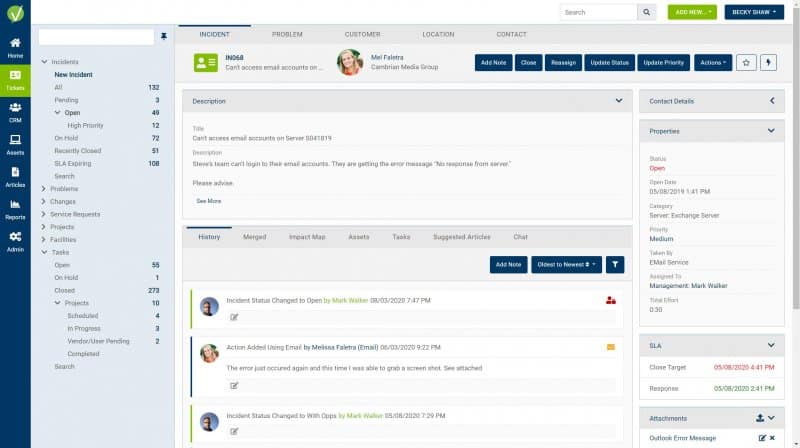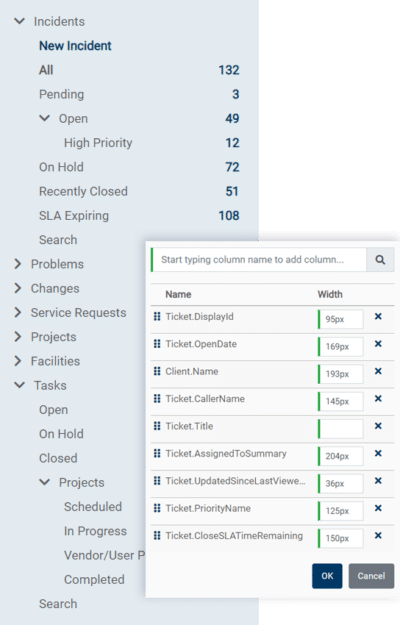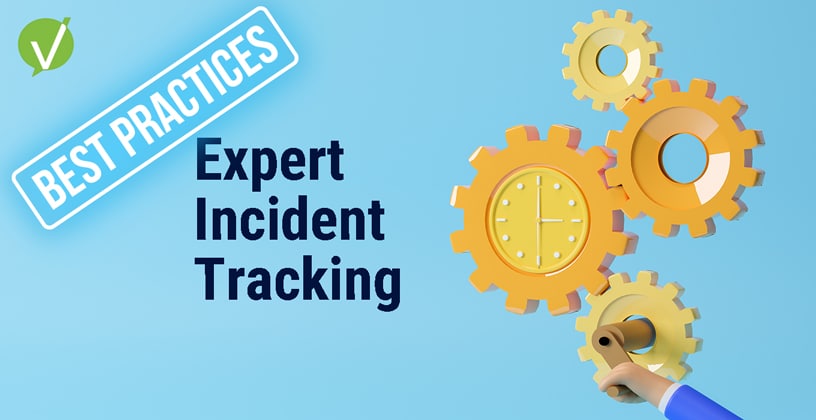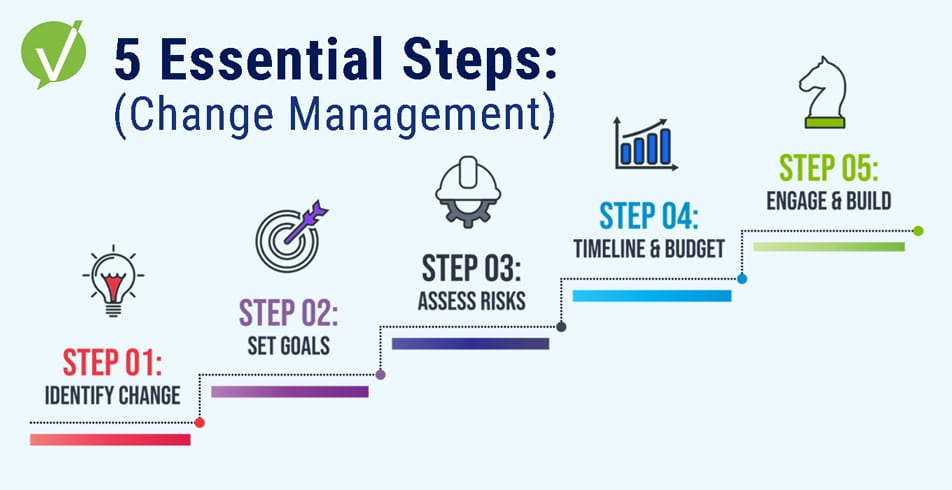Master Your Process with Expert Incident Tracking Best Practices
Introduction
Welcome to our guide on mastering your workflow with expert incident tracking best practices. Incidents can occur at any moment, and effectively managing them is essential for maintaining productivity and customer satisfaction. In this article, we will explore the importance of incident tracking, root cause analysis, and how it can improve your workflow. We’ll discuss the benefits of using incident management software reporting tools and the different options available to help you track and manage incidents effectively.
Key Takeaways:
- Incident tracking is crucial for maintaining productivity and customer satisfaction.
- Incident management software can streamline and automate your incident response process.
- Centralizing incidents and prioritizing them can enhance your incident management efficiency.
- Analyzing incident data helps identify trends, respond, and resolve future incidents.
- Real-time metrics and Service Level Agreements (SLAs) play a vital role in efficient incident management.
Streamline and Automate Your Incident Response With Incident Tracking Software
By utilizing the right tools, you can effectively track incidents in real-time, automate alerts, and resolve issues efficiently. This allows you to optimize your workflow and save valuable time and resources.
With incident tracking software, you can easily track incident progress, assign tasks to the appropriate teams or individuals, and monitor the status of each incident in real-time. By gaining visibility into the incident lifecycle, you can identify bottlenecks and take proactive measures to speed up resolution.

Simplify Incident Reporting With An Incident Management Process
Automating your incident response workflow streamlines the entire process, allowing for faster and more accurate incident reporting. With incident tracking software, you can eliminate manual data entry, reduce human error, and ensure consistent incident documentation.
Additionally, incident tracking software allows you to customize incident forms based on your specific needs. You can include relevant fields and dropdown menus to capture all the necessary information, ensuring that nothing is missed during the incident reporting process.

Automate Alerts to Track and Resolve Incidents
Incident tracking software enables automated alerts, ensuring that the right individuals or teams are notified promptly when an incident occurs. This real-time notification system helps expedite incident response and ensures that no critical incidents go unnoticed.
| Benefits of Incident Tracking Software for Automating Incident Response |
|---|
|
By automating incident response, you can reduce manual intervention and minimize the risk of delays or errors. This allows your team to focus on resolving incidents promptly, improving overall productivity and customer satisfaction.
Incident tracking software provides the necessary tools to streamline and automate your incident response. By tracking incidents in real-time, automating alerts, and resolving issues efficiently, you can optimize your workflow and ensure timely incident resolution.
Centralize and Prioritize Incidents for An Efficient Management System
Efficient incident management hinges on two key pillars: centralization and prioritization. Centralizing all your incidents in one platform ensures easy access to crucial information, while prioritization helps allocate resources effectively and address critical issues first. This combination leads to smoother processes, faster resolution, and minimized impact on your operations.
Centralizing Incidents:
Benefit |
Action |
|---|---|
| Consolidated data | Leverage incident management software for a unified platform. |
| Easy retrieval | Record all incident details, timestamps, communication, and attachments. |
| Streamlined analysis | Access and review information readily for efficient resolution. |
Prioritizing Incidents:
Benefit |
Action |
|---|---|
| Effective resource allocation | Define best practices based on severity, impact, and urgency. |
| Clear framework | Establish a consistent prioritization system aligned with goals. |
| Prompt resolution | Focus efforts on critical issues to minimize negative consequences. |
| Optimized productivity | Assign the right expertise to each incident based on priority. |
Implementing both centralization and prioritization empowers you to manage incidents effectively. By utilizing dedicated software and establishing clear frameworks, you can enhance efficiency, minimize downtime, and ensure smooth operations. Remember, a proactive approach to incident management leads to a more resilient and responsive organization.
Identify Trends, Troubleshoot, and Prevent Future Incidents
Incident tracking is not just about resolving current issues. It also plays a crucial role in identifying trends and preventing future incidents. By analyzing incident data, you can gain valuable insights that enable you to take proactive measures and improve overall system performance.
Through the power of incident tracking, you can easily identify patterns and troubleshoot recurring issues. By understanding the root causes of these incidents, you can implement effective corrective actions and prevent them from happening again in the future.
Here’s how incident tracking software helps you identify trends and proactively mitigate future incidents:
⇛Analyze and Track Incident Data:
By collecting and analyzing incident data, you can uncover hidden trends and patterns that may not be immediately noticeable. Incident tracking software provides you with comprehensive reports and metrics that present a clear picture of your system’s weak points and frequent problem areas.
⇛Identify Common Causes:
By pinpointing the common causes behind incidents, you can address the underlying issues and prevent future occurrences. Whether it’s a software bug, a misconfiguration, or a lack of training, incident tracking software helps you troubleshoot and identify the root cause, enabling you to implement preventive measures.
⇛Implement Preventive Measures:
Equipped with the insights gained from incident tracking software, you can proactively implement preventive measures. Whether it’s improving documentation, providing additional training, or enhancing system resilience, you can take targeted actions to minimize the likelihood of future incidents.
By utilizing incident tracking, you can identify trends, troubleshoot recurring issues, and prevent future incidents. This proactive approach not only improves system performance but also enhances customer satisfaction and reduces the overall impact of incidents.
Trends |
Benefits |
|---|---|
| Identifying patterns and common causes | Enables proactive measures to prevent future incidents |
| Improved system performance | Optimizes workflow and reduces downtime |
| Enhanced customer satisfaction | Minimizes the impact of incidents on customers |
Efficient Incident Management with Real-Time Metrics and SLAs
When it comes to incident management, real-time metrics and Service Level Agreements (SLAs) are essential for ensuring efficiency and prompt resolution. By leveraging incident tracking tools, you can access real-time metrics and track SLAs, allowing you to measure performance, meet service targets, and optimize incident resolution time.
Real-time metrics provide you with up-to-date insights into the status of your incidents, enabling you to monitor service level indicators and identify bottlenecks in your incident management best practices. By tracking SLAs, you can ensure that incidents are being addressed within the agreed-upon timeframes, maintaining customer satisfaction and meeting organizational objectives.
In addition to monitoring performance and meeting SLAs, incident tracking tools offer valuable data for analysis. By tracking and analyzing incident metrics, you can identify trends, pinpoint areas for improvement, and proactively address recurring issues. This data-driven approach helps you troubleshoot and resolve incidents more efficiently, minimizing their impact on your organization.
“Real-time metrics and SLAs are crucial components of efficient incident management. By leveraging incident tracking tools, you can measure performance, meet SLAs, and optimize incident resolution time.”
To illustrate the importance of real-time metrics and SLAs, consider the following example:
Metric |
Target |
Actual |
|---|---|---|
| Average Incident Resolution Time | 2 hours | 4 hours |
| Customer Satisfaction Rating | 95% | 78% |
| SLA Compliance | 99% | 90% |
In this scenario, the real-time metrics reveal that the average incident resolution time exceeds the target, indicating a potential issue with the incident management process. The lower customer satisfaction rating and SLA compliance further emphasize the need for improvement. By leveraging real-time incident metrics and SLA tracking, you can identify the areas that require attention and initiate actions to rectify the situation, ultimately leading to enhanced incident management and improved organizational performance.
By incorporating real-time metrics and SLAs into your incident management strategy, you can streamline your workflow, identify areas for improvement, and deliver efficient incident resolution. The ability to measure performance in real time and adhere to SLAs ensures that incidents are promptly addressed, customer satisfaction is maintained, and your organization operates at its full potential.
Streamline Incident Communication and Collaboration
Clear and effective communication is at the core of successful incident management. Without proper communication channels and collaboration, incidents can quickly escalate, causing unnecessary delays and confusion. Incident tracking software offers a seamless solution to streamline incident communication and enhance collaboration among teams.
Improved Communication
With incident tracking software, you can consolidate incident-related information in one central platform. This allows teams to have a comprehensive overview of incidents, making it easier to exchange critical information and updates. By eliminating the need for multiple email threads or scattered communication channels, incident reporting becomes more efficient and ensures that everyone has access to the latest information.
“Using incident tracking software has greatly improved our communication efficiency. We no longer waste time searching through emails or chat logs to find vital incident details. Everything is centralized and accessible to all team members, which has significantly streamlined our incident resolution process.”
Seamless Collaboration
Collaboration is key when resolving incidents, as it allows for the pooling of knowledge and expertise. Incident tracking software facilitates real-time collaboration and encourages cross-team communication. It enables team members to work together on incident resolution, share insights, and contribute to the timely resolution of issues.
“With incident tracking software, collaboration has become effortless. We can assign incidents to the relevant teams, add comments and updates in real-time, and ensure that everyone is on the same page. This collaborative approach has greatly improved our incident resolution time and customer satisfaction.”
Timely Updates
Keeping stakeholders informed about the progress of incident resolution is crucial for effective incident management. Incident tracking software enables timely updates by automatically notifying relevant parties about incident status changes, updates, and resolutions. This ensures that everyone involved is kept in the loop and reduces the likelihood of miscommunication or outdated information.
“Before using incident tracking software, we struggled with keeping stakeholders informed about incident progress. Now, with automated notifications and real-time updates, we can provide timely updates to all relevant parties. This has improved transparency, accountability, and customer satisfaction.”
Streamlining incident communication and collaboration is essential for effective incident management. Incident tracking software enables improved communication, seamless collaboration, and timely updates, ultimately leading to faster incident resolution and enhanced customer satisfaction.
Leverage Incident Management Solutions for Effective Resolution
Incidents and disruptions can occur at any moment. To ensure efficient incident resolution, organizations need effective incident management solutions that enable quick response and resolution. In this section, we will explore various incident management tools and systems that can empower your organization to handle incidents effectively and minimize downtime.
Choosing the Right Incident Management Solution
When selecting an incident management tool or system, it’s crucial to consider your organization’s specific needs and requirements. Here are key features to look for:
- Incident Tracking: Look for tools that provide comprehensive incident tracking capabilities, allowing you to log, categorize, prioritize, and assign incidents.
- Real-time Communication: Effective incident management relies on seamless communication. Choose a solution with real-time communication features, such as instant messaging or chat functionality, to connect team members and stakeholders.
- Automation: Automation can streamline incident resolution by automating routine tasks, such as sending notifications or escalating incidents based on predefined rules.
- Integration: Consider whether the incident management solution can integrate with your existing systems and tools, such as ticketing systems or monitoring tools, to enable seamless data exchange and collaboration.
Benefits of Incident Management Tools and Systems
Implementing an incident management tool or system can offer numerous benefits to your organization:
By leveraging incident management solutions, organizations can:
- Improve Incident Resolution Time: Incident management tools streamline the incident resolution process, ensuring that incidents are addressed promptly and efficiently.
- Enhance Communication and Collaboration: With real-time communication features, incident management systems facilitate seamless collaboration among team members, enabling quicker resolutions and reducing miscommunication.
- Optimize Resource Allocation: By providing visibility into incidents and their impact, incident management tools help allocate resources effectively, ensuring that the right skills and expertise are applied to resolve incidents.
- Track and Analyze Incident Data: Incident management systems generate valuable incident data that can be analyzed to identify trends, recurring issues, and areas for improvement, enabling organizations to make data-driven decisions.
Minimize Impact and Drive Customer Satisfaction
Keeping incidents to a minimum and resolving them quickly is crucial for delivering great customer experiences. When your customers encounter an issue, it’s essential to provide them with prompt support and solutions. With the help of incident tracking software, you can effectively manage incidents, minimize their impact, and ensure excellent customer service.
Incident tracking allows you to streamline the incident resolution process, enabling you to respond swiftly to customer concerns. By centralizing and prioritizing incidents, you can allocate resources efficiently and address critical issues first. This proactive approach helps minimize downtime and ensures your customers receive the timely assistance they expect.
Additionally, incident tracking software enables real-time monitoring and reporting, allowing you to track the progress of incident resolution and keep your customers informed. By providing timely updates and transparent communication, you build trust and enhance customer satisfaction. With effective incident management, you can maintain a positive reputation and drive customer loyalty.
Building Trust with Expertise and Results: Master Incident Tracking with Vivantio
Tired of reactive incident management? Proactively gain control with Vivantio’s industry-leading expertise and proven solutions. Our flexible incident tracking platform empowers you to:
- Centralize & prioritize incidents: Streamline your process with a unified platform for recording, tracking, and prioritizing all your incidents.
- Minimize downtime & disruptions: Resolve critical issues quickly and efficiently with clear prioritization and resource allocation.
- Unlock valuable insights: Gain valuable insights from incident data to prevent future occurrences and improve overall performance.
Experience the difference with Vivantio:
- Industry-leading expertise: Leverage our team’s deep knowledge and proven methodologies to optimize your incident tracking.
- Flexible solutions: Tailor our platform to your specific needs, whether you’re a small business or a large enterprise.
- Dedicated support: Enjoy continuous support from our team throughout your journey, ensuring your success.
Ready to empower your team with proactive incident tracking? Explore independent reviews and case studies to see how Vivantio has transformed incident management for others. Connect with our expert team and schedule a personalized consultation to discuss your unique needs. Sign up for a free demo and experience the power of Vivantio firsthand. Take control of your incidents today!.













